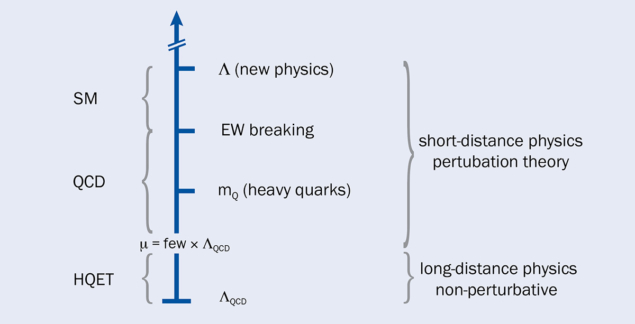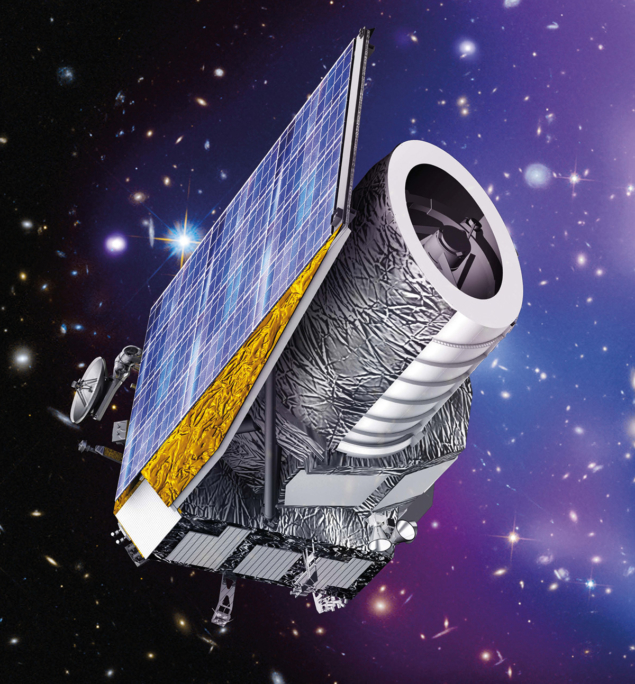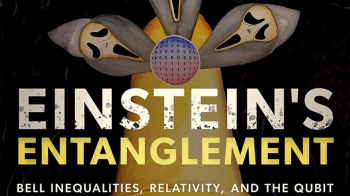Michèle Levi takes a tour through the past, present and future of Effective Field Theory, with applications ranging from LHC physics to cosmology.

High-energy physics spans a wide range of energies, from a few MeV to TeV, that are all relevant. It is therefore often difficult to take all phenomena into account at the same time. Effective field theories (EFTs) are designed to break down this range of scales into smaller segments so that physicists can work in the relevant range. Theorists “cut” their theory’s energy scale at the order of the mass of the lightest particle omitted from the theory, such as the proton mass. Thus, multi-scale problems reduce to separate and single-scale problems (see “Scales” image). EFTs are today also understood to be “bottom-up” theories. Built only out of the general field content and symmetries at the relevant scales, they allow us to test hypotheses efficiently and to select the most promising ones without needing to know the underlying theories in full detail. Thanks to their applicability to all generic classical and quantum field theories, the sheer variety of EFT applications is striking.
In hindsight, particle physicists were working with EFTs from as early as Fermi’s phenomenological picture of beta decay in which a four-fermion vertex replaces the W-boson propagator because the momentum is much smaller compared to the mass of the W boson (see “Fermi theory” image). Like so many profound concepts in theoretical physics, EFT was first considered in a narrow phenomenological context. One of the earliest instances was in the 1960s, when ad-hoc methods of current algebras were utilised to study weak interactions of hadrons. This required detailed calculations, and a simpler approach was needed to derive useful results. The heuristic idea of describing hadron dynamics with the most general Lagrangian density based on symmetries, the relevant energy scale and the relevant particles, which can be written in terms of operators multiplied by Wilson coefficients, was yet to be known. With this approach, it was possible to encode local symmetries in terms of the current algebra due to their association with conserved currents.
For strong interactions, physicists described the interaction between pions with chiral perturbation theory, an effective Lagrangian, which simplified current algebra calculations and enabled the low-energy theory to be investigated systematically. This “mother” of modern EFTs describes the physics of hadrons and remains valid to an energy scale of the proton mass. Heavy-quark effective theory (HQET), introduced by Howard Georgi in 1990, complements chiral perturbation theory by describing the interactions of charm and bottom quarks. HQET allowed us to make predictions on B-meson decay rates, since the corrections could now be classified. The more powers of energy are allowed, the more infinities appear. These infinities are cancelled by available counter-terms.

Similarly, it is possible to regard the Standard Model as the truncation of a much more general theory including non-renormalisable interactions, which yield corrections of higher order in energy. This perception of the whole Standard Model as an effective field theory started to be formed in the late 1970s by Weinberg and others (see “All things EFT: a lecture series hosted at CERN” panel). Among the known corrections to the Standard Model that do not satisfy its approximate symmetries are neutrino masses, postulated in the 1960s and discovered via the observation of neutrino oscillations in the late 1990s. While the scope of EFTs was unclear initially, today we understand that all successful field theories, with which we have been working in many areas of theoretical physics, are nothing but effective field theories. EFTs provide the theoretical framework to probe new physics and to establish precision programmes at experiments. The former is crucial for making accurate theoretical predictions, while the latter is central to the physics programme of CERN in general.
EFTs in particle physics
More than a decade has passed since the first run of the LHC, in which the Higgs boson and the mechanism for electroweak symmetry breaking were discovered. So far, there are no signals of new physics beyond the SM. EFTs are well suited to explore LHC physics in depth. A typical example for an event involving two scales is Higgs-boson production because there is a factor 10–100 between its mass and transverse momentum. The calculation of each Higgs-boson production process leads to large logarithms that can invalidate perturbation theory due to the large-scale separation. This is just one of many examples of the two-scale problem that arises when the full quantum field theory approach for high-energy colliders is applied. Traditionally, such two-scale problems have been treated in the framework of QCD factorisation and resummation.

Over the past two decades, it has been possible to recast two-scale problems at high-energy colliders with the advent of soft-collinear effective theory (SCET). SCET is nowadays a popular framework that is used to describe Higgs physics, jets and their substructure, as well as more formal problems, such as power corrections to reconstruct full amplitudes eventually. The difference between HQET and SCET is that SCET considers long-distance interactions between quarks and both soft and collinear particles, whereas HQET takes into account only soft interactions between a heavy quark and a parton. SCET is just one example where the EFT methodology has been indispensable, even though the underlying theory at much higher energies is known. Other examples of EFT applications include precision measurements of rare decays that can be described by QCD with its approximate chiral symmetry, or heavy quarks at finite temperature and density. EFT is also central to a deeper understanding of the so-called flavour anomalies, enabling comparisons between theory and experiment in terms of particular Wilson coefficients.
All things EFT: a lecture series hosted at CERN

A novel global lecture series titled “All things EFT” was launched at CERN in autumn 2020 as a cross-cutting online series focused on the universal concept of EFT, and its application to the many areas where it is now used as a core tool in theoretical physics. Inaugurated in a formidable historical lecture by the late Steven Weinberg, who reviewed the emergence and development of the idea of EFT through to its perception nowadays as encompassing all of quantum field theory and beyond, the lecture series has amassed a large following that is still growing. The series featured outstanding speakers, world-leading experts from cosmology to fluid dynamics, condensed-matter physics, classical and quantum gravity, string theory, and of course particle physics – the birthing bed of the powerful EFT framework. The second year of the series was kicked off in a lecture dedicated to the memory of Weinberg by Howard Georgi, who looked back on the development of heavy-quark effective theory and its immediate aftermath.
Moreover, precision measurements of Higgs and electroweak observables at the LHC and future colliders will provide opportunities to detect new physics signals, such as resonances in invariant mass plots, or small deviations from the SM, seen in tails of distributions for instance at the HL-LHC – testing the perception of the SM as a low-energy incarnation of a more fundamental theory being probed at the electroweak scale. This is dubbed the SMEFT (SM EFT) or HEFT (Higgs EFT), depending on whether the Higgs fields are expressed in terms of the Higgs doublet or the physical Higgs boson. This particular EFT framework has recently been implemented in the data-analysis tools at the LHC, enabling the analyses across different channels and even different experiments (see “LHC physics” image). At the same time, the study of SMEFT and HEFT has sparked a plethora of theoretical investigations that have uncovered its remarkable underlying features, for example allowing EFT to be extended or placing constraints on the EFT coefficients due to Lorentz invariance, causality and analyticity.
EFTs in gravity
Since the inception of EFT, it was believed that the framework is applicable only to the description of quantum field theories for capturing the physics of elementary particles at high-energy scales, or alternatively at very small length scales. Thus, EFT seemed mostly irrelevant regarding gravitation, for which we are still lacking a full theory valid at quantum scales. The only way in which EFT seemed to be pertinent for gravitation was to think of general relativity as a first approximation to an EFT description of quantum gravity, which indeed provided a new EFT perspective at the time. However, in the past decade it has become widely acknowledged that EFT provides a powerful framework to capture gravitation occurring completely across large length scales, as long as these scales display a clear hierarchy.

The most notable application to such classical gravitational systems came when it was realised that the EFT framework would be ideal to handle gravitational radiation emitted at the inspiral phase of a binary of compact objects, such as black holes. At this phase in the evolution of the binary, the compact objects are moving at non-relativistic velocities. Using the small velocity as the expansion parameter exhibits the separation between the various characteristic length scales of the system. Thus, the physics can be treated perturbatively. For example, it was found that even couplings manifestly change in classical systems across their characteristic scales, which was previously believed to be unique to quantum field theories. The application of EFT to the binary inspiral problem has been so successful that the precision frontier has been pushed beyond the state of the art, quickly surpassing the reach of work that has been focused on the two-body problem for decades via traditional methods in general relativity.
This theoretical progress has made an even broader impact since the breakthrough direct discovery of gravitational waves (GWs) was announced in 2016. An inspiraling binary of black holes merged into a single black hole in less than a split second, releasing an enormous amount of energy in the form of GWs, which instigated even greater, more intense use of EFTs for the generation of theoretical GW data. In the coming years and decades, a continuous increase in the quantity and quality of real-world GW data is expected from the rapidly growing worldwide network of ground-based GW detectors, and future space-based interferometers, covering a wide range of target frequencies (see “Next generation” image).
EFTs in cosmology
Cosmology is inherently a cross-cutting domain, spanning scales over about 1060 orders of magnitude, from the Planck scale to the size of the observable universe. As such, cosmology generally cannot be expected to be tackled directly by each of the fundamental theories that capture particle physics or gravity. The correct description of cosmology relies heavily on the work in many disparate areas of research in theoretical and experimental physics, including particle physics and general relativity among many more.

The development of EFT applications in cosmology – including EFTs of inflation, dark matter, dark energy and even EFTs of large-scale structure – has become essential to make observable predictions in cosmology. The discovery of the accelerated expansion of the universe in 1998 shows our difficulty in understanding gravity both at the quantum regime and the classical one. The cosmological constant problem and dark-matter paradigm might be a hint for alternative theories of gravity at very large scales. Indeed, the problems with gravity in the very-high and very-low energy range may well be tied together. The science programme of next-generation large surveys, such as ESA’s Euclid satellite (see “Expanding horizons” image), rely heavily on all these EFT applications for the exploitation of the enormous data that is going to be collected to constrain unknown cosmological parameters, thus helping to pinpoint viable theories.
The future of EFTs in physics
The EFT framework plays a key role at the exciting and rich interface between theory and experiment in particle physics, gravity and cosmology as well as in other domains, such as condensed-matter physics, which were not covered here. The technology for precision measurements in these domains is constantly being upgraded, and in the coming years and decades we are heading towards a growing influx of real-world data of higher quality. Future particle-collider projects, such as the Future Circular Collider at CERN, or China’s Circular Electron Positron Collider, are being planned and developed. Precision cosmology is also thriving, with an upcoming next-generation of very large surveys, such as the ground-based LSST, or space-based Euclid. GW detectors keep improving and multiplying, and besides those that are currently operating many more are planned, aimed at measuring various frequency ranges, which will enable a richer array of sources and events to be found.
EFTs provide the theoretical framework to probe new physics and to establish precision programmes at experiments across all domains of physics
Half a century after the concept has formally emerged, effective field theory is still full of surprises. Recently, the physical space of EFTs has been studied as a fundamental entity in its own right. These studies, by numerous groups worldwide, have exposed a new hidden “totally positive’’ geometric structure dubbed the EFT-hedron that constrains the EFT expansion in any quantum field theory, and even string theory, from first principles, including causality, unitarity and analyticity, to be satisfied by any amplitudes of these theories. This recent formal progress reflects the ultimate leap in the perception of EFT nowadays as the most fundamental and most generic theory concept to capture the physics of nature at all scales. Clearly, in the vast array of formidable open questions in physics that still lie ahead, effective field theory is here to stay – for good.
Further reading
S Weinberg 2021 Eur. Phys. J. H. 46 6.
S Weinberg 1979 Physica A 96 327–340.
C Burgess 2015 Lecture Notes of Les Houches 100 148–197.
M Levi 2020 Rept. Prog. Phys. 83 075901.
I Brivio et al. 2020 Phys. Rept. 793 1–98.
M Tanabashi et al. 2018 Phys. Rev. D 98 030001.








